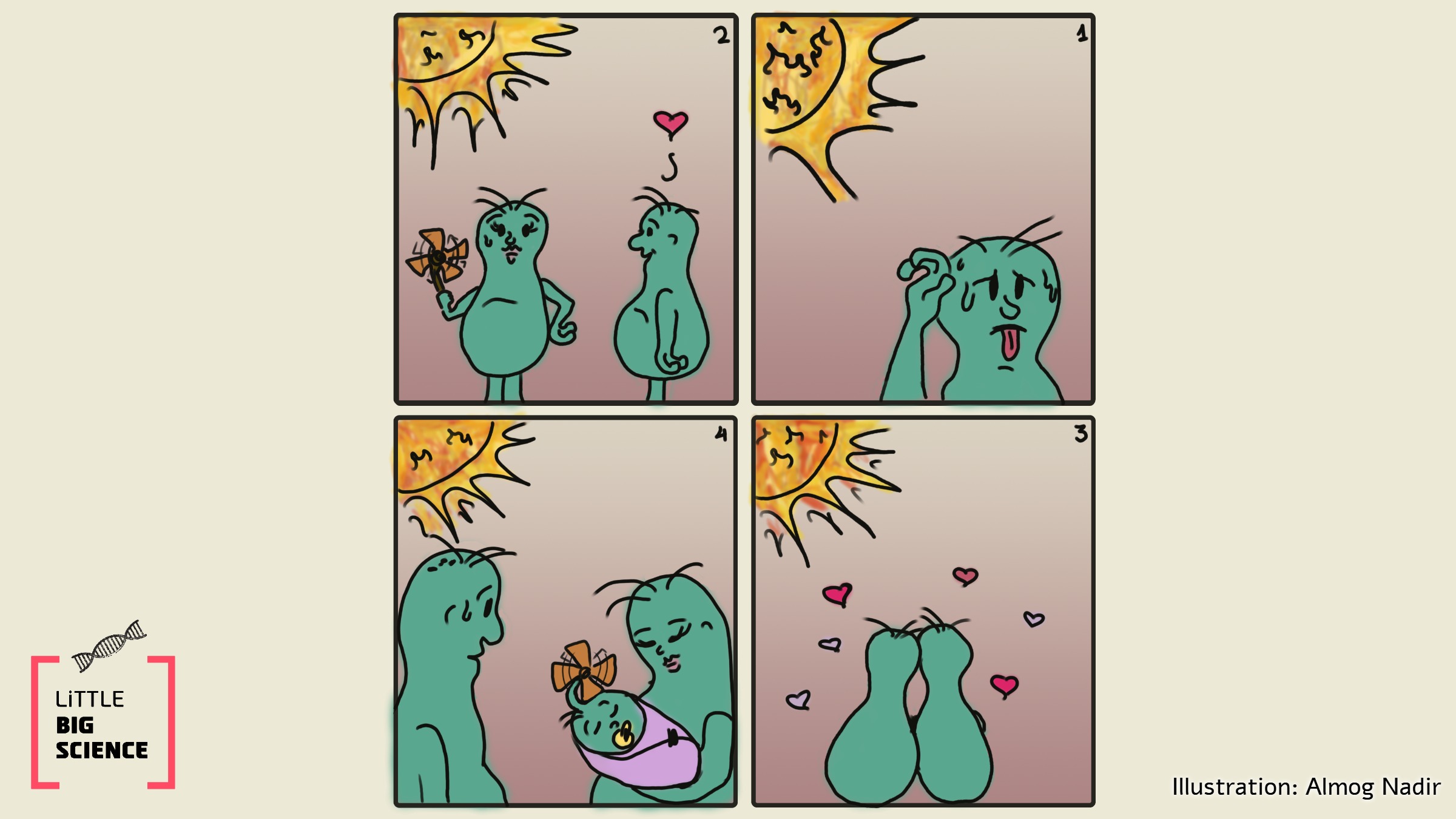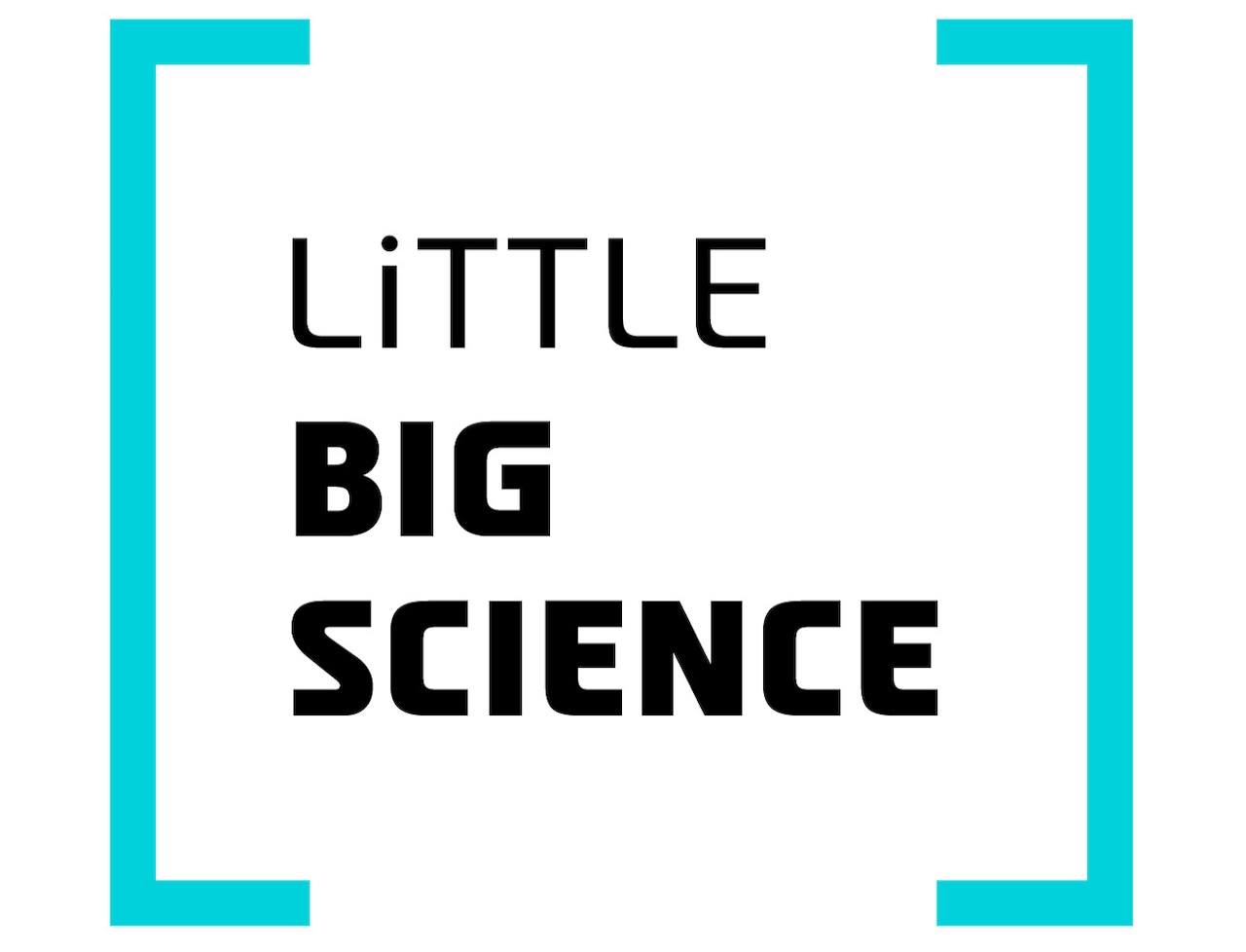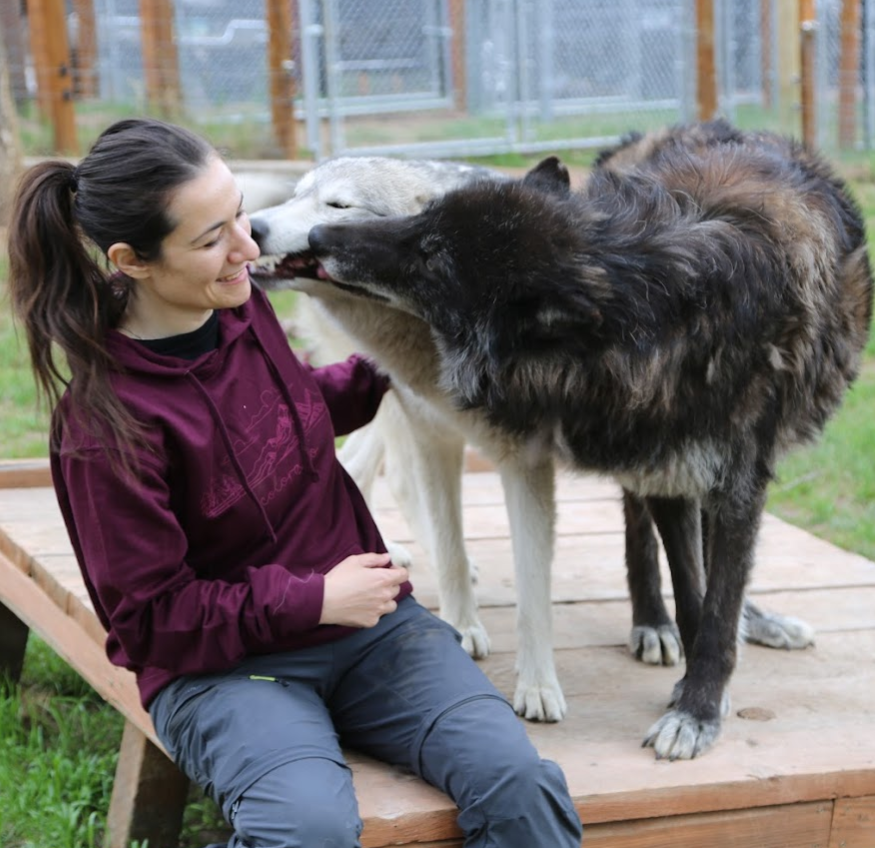
For many years, scientists believed that genetic material was the only inheritable biological element. Here, we will address the possibility that an individual’s interactions with the environment can also be inherited by the next generation and may even influence the evolution of species.
Advertisement
Every living organism carries DNA inherited from its parents. DNA contains genes, the instructions that build the entire organism—they determine eye color, leaf shape [1], and even behavior [2]. Many traits are influenced by an interplay between the genetic makeup and the environment in which the individual lives (the risk of developing heart disease, for example, depends on the genes we inherit from our parents but also on our lifestyle [3]), yet, according to what we learned at school, the only hereditary material passed on to future generations is DNA. Is that the whole story?
The DNA sequence in our body is identical in every single cell, yet a muscle cell, for example, differs greatly from a nerve cell, and, in fact, each of them produces a different subset of proteins from the same collection of genes [4]. This phenomenon is made possible by processes that do not alter the DNA sequence itself, collectively called epigenetics (literally: “above genetics”) [5]. Epigenetics operates in various ways—for instance, by adding small molecules to the DNA that block access to certain genes, by varying the presence of proteins that promote or inhibit the expression of particular genes, or by means of small RNA molecules that prevent specific genes from being translated into proteins. You can read more about these mechanisms in our previous posts [6–7].
Beyond its central role in cell-type differentiation, epigenetics has recently been shown to mediate the influence of environmental factors on an individual and alter its traits. The female honey-bee larva, for example, possesses the genetic potential to become either a queen or a simple worker; after being fed different diets, a small fraction of the larvae develop into queens while the rest become workers. The difference in diet composition triggers epigenetic changes and thereby distinct gene expression patterns in the young larvae that consume it [8]. Observations like this vividly illustrate how the environment shapes an organism’s characteristics.
The obvious question is whether a trait that arises in response to a particular environment can be transmitted to the next generation even though the DNA itself remains unchanged. For a long time the scientific community assumed that this could not happen. A prominent argument was that during the early stages of development the embryo’s cells must erase all epigenetic marks in order to return to an undifferentiated state from which the full variety of cell types can be produced [9].
In the early 1980s, evidence pointing to environmentally induced epigenetic modifications that are inherited by the offspring began accumulating. First, in plants—tobacco plants exposed to a virus produced progeny that were more resistant to the same virus [10]. Over the years additional reports have described the inheritance of acquired traits in many other organisms, including yeast, nematodes, arthropods and even mammals [11–12]. In a study published in 2013, male mice were exposed to a specific odor and subsequently given mild electric shocks. The offspring of these mice (both the first and second generations), which grew up without any contact with the shocked fathers, displayed a fear response to the same odor [13–14]. In other words, the fear imprinted in the father during his lifetime was passed on, even to his grandchildren. This phenomenon, observed repeatedly in recent years in various organisms, once seemed inconceivable—a heritable environmental effect. Such inheritance that does not arise from changes in the DNA sequence is called epigenetic inheritance.
Epigenetic inheritance has distinct features [15–16]. Epigenetic changes occur far more frequently than alterations in the DNA sequence. They are reversible and persist for only a small number of generations, in contrast to a genetic mutation that cannot easily “revert” [17]. Nevertheless, can epigenetics affect evolution?
Epigenetics, whether inherited or not, can affect evolution in several ways [16,18]. It has been shown that certain epigenetic marks can influence the DNA sequence itself, for example by increasing the rate at which mutations accumulate [19–20]. In addition, epigenetics can facilitate the emergence of new species; epigenetic changes can alter traits in a part of a population and, for instance, shift the flowering time of a plant or the shape of an insect’s head [18]. This may create sub-populations that mate only among themselves and, as random mutations gradually accumulate in their DNA, distinct species can eventually arise [18].
Further evidence was obtained in a new study published this month by an Israeli research group: nematodes raised at elevated temperatures, which normally prefer self-fertilization, began to secrete a pheromone that attracts males for outcrossing—a behavior that was inherited for several generations [21–22]. This intriguing field is still in its infancy, and although it is widely discussed in theory, there are not yet many empirical examples that demonstrate a direct influence of epigenetics on changes in DNA or on processes with potential evolutionary impact.
Epigenetic inheritance can evoke the ideas of Jean-Baptiste de Lamarck (1744–1829), a French naturalist who proposed that an organism adapts itself to the environment and passes those adaptations to its offspring. Thus, for example, a giraffe that wishes to reach a high branch stretches its neck, and as a result its progeny are born with longer necks. Over the years many discoveries have led the scientific community to reject this theory.
Is epigenetic inheritance the resurrection of Lamarckism? Because of the similarity between environmentally induced heritable epigenetic changes and Lamarck’s ideas, references to his theory have begun to appear in the scientific literature [23–24]. Nevertheless, many argue that these findings do not vindicate Lamarck, because the accumulation of such changes is not actively directed by the individual. Epigenetic modifications that are transmitted to the next generation are not necessarily beneficial, they too are subject to natural selection, and they are not stable for many generations; therefore, their evolutionary impact may be limited [25].
One thing is clear—the field of epigenetic inheritance is fascinating, and many more studies are needed to understand the scope of the phenomenon and its evolutionary implications.
Hebrew editing: Yinon Kachtan
English editing: Elee Shimshoni
References and further reading:
- “The Genetic Shakshuka” – Little, big science
- The Social Gene – Little, big science
- Review of the relationship between environment and genetics in cardiac diseases
- Article addressing differential protein expression among tissues
- History of epigenetics research
- Our previous post on epigenetic inheritance in nematodes
- Our previous post about epigenetics
- Paper on nutrition and epigenetics in honey-bee larval development
- Review focusing on epigenetic inheritance
- Inheritance of an acquired trait in tobacco plants
- Review on the prevalence of epigenetic inheritance
- Transgenerational inheritance of an acquired small RNA-based antiviral response in C. elegans
- Paper on intergenerational transfer of odor memory in mice
- Article explaining the study on odor-induced fear in mice
- Review addressing the impact of epigenetic mutations on evolution
- Review on the evolutionary implications of epigenetic inheritance
- Three Rules Explain Transgenerational Small RNA Inheritance in C. elegans
- On the possible influence of epigenetics on speciation
- Paper on mutation frequency in the presence of epigenetic marks
- DNA Crossover Motifs Associated with Epigenetic Modifications Delineate Open Chromatin Regions in Arabidopsis
- Courtesy of the worms: the studies reshaping what we know about inheritance mechanisms – Globes
- Transgenerational inheritance of sexual attractiveness via small RNAs enhances evolvability in C. elegans
- The Darwinian chicken and the Lamarckian egg
- Video by Prof. Eva Jablonka on epigenetic inheritance and Lamarckism
- Why epigenetic inheritance does not vindicate Lamarck









